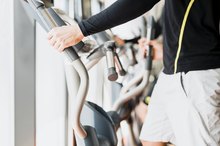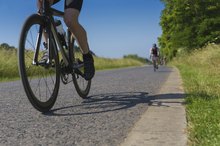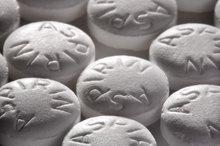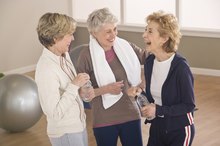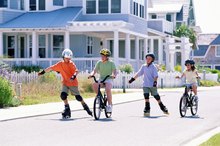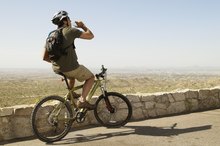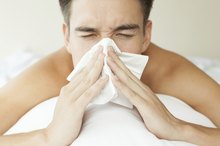Body Aches From Not Exercising
According to the Centers for Disease Control and Prevention, only approximately 10 percent to 43 percent of people in the U.S. engage in physical activity for leisure. Inactivity can be as hard on your body as excessive activity. If you have unexplained body aches, you may find that those aches and pains have a lot to do with your lifestyle.
Cause
According to MedlinePlus, not getting enough exercise can put you at risk for developing disuse atrophy. Disuse atrophy occurs when muscles that are not used enough weaken and waste away due to a loss of muscle tissue and tone. This makes muscles more prone to feeling sore and achy. A rise in sedentary lifestyles is largely related to the increased use of electronic devices like computers as well as increasing numbers of workers with desk jobs. Those who are bedridden or who suffer from medical disorders that affect mobility can also develop disuse atrophy.
- According to MedlinePlus, not getting enough exercise can put you at risk for developing disuse atrophy.
Sedentary Lifestyle Solutions
Exercising on Klonopin
Learn More
Achy muscles may make you feel less motivated to move, but more movement is exactly what you need. Exercise strengthens weak muscles and builds muscle tissue. Increase your amount of exercise gradually. Finding fun ways to fit physical activity into your schedule will make you more likely to stick with it. If you prefer to be out in the fresh air, opt for outdoor activities like walking, playing sports or swimming. If you can't get outside because of weather, indoor activities like dancing and weightlifting work just as well. If you have a desk job, try taking a quick stroll around the building or down the block every day during lunch.
- Achy muscles may make you feel less motivated to move, but more movement is exactly what you need.
Medical Disorder Solutions
Getting adequate amounts of exercise is equally important for people with physical limitations. If your health makes you less active than you would like, your doctor can recommend safe exercises. Patients with mobility problems may benefit from working with a physical therapist until comfortable exercising independently. Gentle activities like stretching and water exercise will help ease you into a more active lifestyle without aggravating your condition.
- Getting adequate amounts of exercise is equally important for people with physical limitations.
- Gentle activities like stretching and water exercise will help ease you into a more active lifestyle without aggravating your condition.
Considerations
Does Cycling Make Hemorrhoids Worse?
Learn More
Taking the initiative to get more exercise is the first step toward eliminating body aches associated with inactivity. However, it may take some time for your body to become accustomed to more intense activities. Do not get discouraged if you experience a temporary increase in body aches within the first few weeks after boosting your physical activity level. Take it slow, and give your body time to adjust and strengthen. Completing a warmup before and cooldown after exercising will help reduce the severity of postexercise body aches.
- Taking the initiative to get more exercise is the first step toward eliminating body aches associated with inactivity.
- Completing a warmup before and cooldown after exercising will help reduce the severity of postexercise body aches.
Related Articles
References
- MedlinePlus: Muscle Atrophy
- National Institute of Arthritis and Musculoskeletal and Skin Diseases: Healthy Muscles Matter
- Rudrappa SS, Wilkinson DJ, Greenhaff PL, Smith K, Idris I, Atherton PJ. Human Skeletal Muscle Disuse Atrophy: Effects on Muscle Protein Synthesis, Breakdown, and Insulin Resistance-A Qualitative Review. Front Physiol. 2016;7:361. doi:10.3389/fphys.2016.00361
- Valderrabano V, Steiger C. Treatment and Prevention of Osteoarthritis through Exercise and Sports. J Aging Res. 2010;2011:374653. doi:10.4061/2011/374653
- Brooks NE, Myburgh KH. Skeletal muscle wasting with disuse atrophy is multi-dimensional: the response and interaction of myonuclei, satellite cells and signaling pathways. Front Physiol. 2014;5:99. doi:10.3389/fphys.2014.00099
- Colloca L, Ludman T, Bouhassira D, et al. Neuropathic pain. Nat Rev Dis Primers. 2017;3:17002. doi:10.1038/nrdp.2017.2
Writer Bio
Tamara Moffett is a freelance copywriter with a bachelor's degree in English and over seven years of experience. She specializes in writing persuasive sales copy, news stories and feature articles for magazines. Her work has appeared online and in the pages of publications like "Green Business Quarterly," "Black Ink Magazine" and the "Daily Journal of Commerce."
